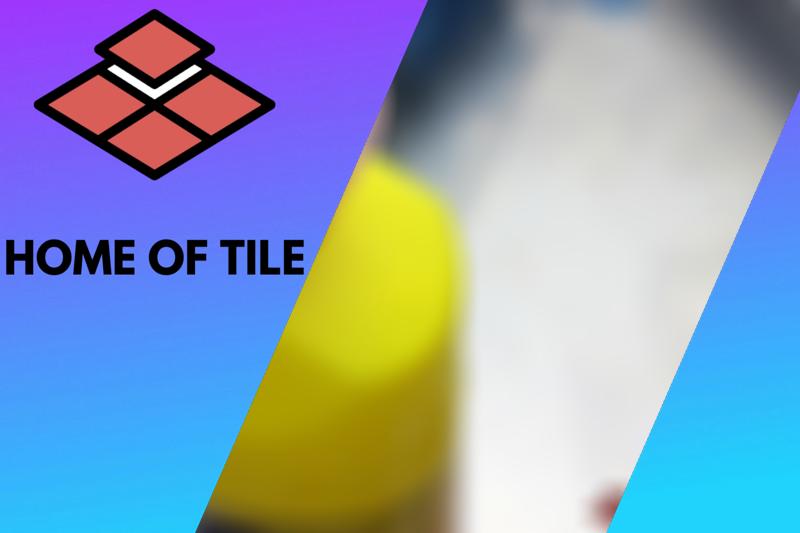How To Bleach Grout. What professionals say
Do you have dirty-looking grout that was once light in color? If so, you’re probably wondering how to use bleach to lighten it.
To bleach grout, mix bleach with water, and apply it to the grout in small amounts. Scrub the grout with a brush and leave it to soak for 10 minutes. Finally, wipe the bleach off with a damp cloth. Bleaching grout can result in uneven discoloration and can damage your grout, so use it sparingly.

Bleaching grout to lighten it and remove stains is not difficult. This article will tell you everything you need to know about bleaching your grout, and I’ll also describe some other lightening methods if you’re not keen on using bleach.
Contents
- 1 Step 1: Prepare the Area and Gather Your Tools
- 2 Step 2: Mix Five Parts of Water With One-Part Bleach
- 3 Step 3: Scrub the Grout with a Hard Bristle Brush
- 4 Step 4: Let the Bleach Soak on the Grout for 10 Minutes
- 5 Step 5: Rinse the Bleach Off
- 6 Step 6: Reapply the Bleach if Needed
- 7 Step 7: Apply a Grout Sealer To Protect It
- 8 Other Methods of Lightening Grout
- 9 Key Takeaways
Step 1: Prepare the Area and Gather Your Tools
You don’t have to be a DIY expert to bleach your dirty grout. As long as you prepare the area correctly, and have the right tools, you’re ready to get started.
Here’s what you’ll need to bleach your grout:
- 1 liter (34 oz) of bleach (depending on the size of the grout area you want to lighten)
- 1 bucket filled with water (depending on the amount of bleach)
- 1 hard bristle brush
- 1 pair of disposable gloves
- 2 clean cloths
- 1 bottle of grout sealer
- 1 foam paintbrush
For safety reasons, always wear disposable gloves when using bleach. According to the EPA, bleach or chlorine is a toxic chemical that can irritate the skin and cause severe burns if you’re exposed to excessive quantities or your skin is cut or broken.
You will also need to ensure that there is proper ventilation in the area before using bleach indoors by opening a few windows. Exposure to bleach fumes can irritate your lungs, eyes, and throat.
Step 2: Mix Five Parts of Water With One-Part Bleach
To dilute bleach in water, I recommend mixing five parts of water with one-part of bleach. Gently stir the solution to ensure even distribution.
It’s important to dilute bleach before using it on grout because undiluted bleach is a corrosive chemical that can damage it.
Here are the reasons:
- Bleach can drastically discolor or even strip the color away from your colored grout resulting in uneven colored grout.
- Using bleach on heavily dyed grout can change your grout color to a completely different hue you may not like. Not all grout mix is the same, and bleach may not react well with the dye used in your grout. In this case, it is better to use grout colorant.
- Bleach can also weaken the grout, causing it to crack and crumble. This means that you’ll have to replace the grout lines sooner, which can be costly.
When applied to grout correctly and with caution, bleach can effectively make your grout a few shades lighter and remove unsightly stains.
Step 3: Scrub the Grout with a Hard Bristle Brush
Before applying the bleach and water solution, you should scrub the grout with a soapy mixture to remove surface dirt and grime. Gentle dishwashing detergent is ideal and you should mix some into a bucket of tepid water.
Dip the hard bristle brush into the soapy solution, and scrub it to remove any grit or grime that has built up.
Dip the brush into the soapy water again, and repeat as needed before scrubbing again. When there is no dirt and discoloration remaining, you can stop scrubbing.
If you’re dealing with mold on your grout, you’ll need a stronger mold cleaner that’s safe for grout.
Step 4: Let the Bleach Soak on the Grout for 10 Minutes
Once you have finished scrubbing the dirt from the grout, you can apply the bleach and water solution. You should leave the bleach to soak on the grout for 10 to 15 minutes.
The grout will start to lighten in as early as 5 minutes, but I recommend waiting for up to 15 minutes to achieve a lighter shade and remove stubborn stains.
Step 5: Rinse the Bleach Off
This step involves wiping the bleach off the grout with a clean, damp cloth. Rinse the cloth in clean water and wipe the grout again until the grime and bleach has gone. Allow the floor to dry completely and keep people and pets away from it while it is drying.
Step 6: Reapply the Bleach if Needed
You‘ll need to wait for the grout to dry completely to see if it turns into the lighter shade you wanted to achieve. If you want the grout to get a few more shades lighter, or there are still some stubborn stains remaining, reapply the bleach solution and leave it on for another 10 to 15 minutes.
Step 7: Apply a Grout Sealer To Protect It
Finally, once your grout is fully dry, you should seal it with a high-quality sealer to protect it against dirt and stains and to maintain its light color for longer.
Grout sealing can be done without the help of an expert, but it can be a tedious job. To seal grout, use a foam paintbrush or a roller to apply a thin coat of sealer to the grout. Allow it to dry for about 15 minutes before applying a second coat.
Use a damp cloth to wipe off excess sealer that gets on the surface of the tiles. Be sure to remove the excess sealer within five minutes of application so that it doesn’t stain the tiles.
After the first coat, leave it to dry completely. Apply a second coat of sealer, and then leave it to dry. Check the label for the manufacturer’s instructions on how long you must wait for the sealer to dry.
Other Methods of Lightening Grout
Using bleach is only one of the many ways to lighten grout. Some other alternatives include the following:
- White vinegar. White vinegar can be used to lighten ceramic, synthetic and porcelain tiles. It can help lighten stained and discolored tiles due to mold and dirt.
- Grout colorant. Grout colorant is a commercially available product used to recolor grout lines. It comes in different variants, such as epoxy, acrylic, and more.
- Regrouting. If you have damaged grout, using vinegar, bleach or colorant can exacerbate the condition. In this case, your only option is to remove it and replace it with new grout.
Key Takeaways
Lightening your grout can significantly improve the look of your floor. If you are looking to lighten your grout without replacing it, bleaching is a practical, easy and cheap way to achieve it. However, make sure that you use the bleach correctly to avoid damaging the grout, which can lead to costly grout or tile repair.







